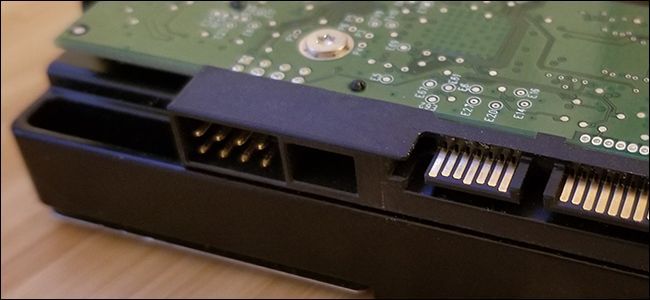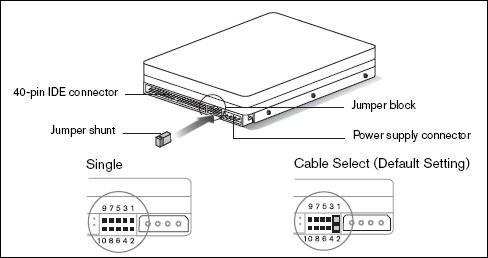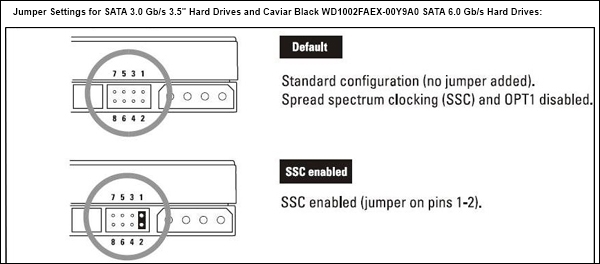You may have pins on the back of your hard drive that nothing is connected to. These pins are called jumpers, and are used to enable specific types of settings. They're not used so much with modern hard drives, except in some special circumstances.
If you're under a certain age, or you just haven't been into computer hardware for long, you've probably never heard of hard drive jumpers. The jumper pins are similar to the pins on the I/O plate on a motherboard. You enable particular settings by placing a jumper shunt onto specific pins---creating an electrical circuit between them. The settings these jumpers enable are hard-coded onto a drive's programmed printed circuit board.
So what do jumpers do? Well, not so much anymore.
Back before SATA became the standard interface for drives, computers used the Integrated Drive Electronics (IDE) standard. You may remember the wide, flat parallel data cables used to connect them. In a parallel ATA setup, multiple drives in a computer needed to be set up as "master" and "slave" drives, a way of identifying and prioritizing drives when you had multiple drives on a single data cable. It's much like setting "drive 0" and "drive 1" on the bus.
PCs don't really work that way, anymore. The only communication port you'll find on new hard drives is SATA, which offers superior bandwidth in a much smaller package. So why are the jumper pins still around? Well, most drives don't have them at all. On those that do, they enable a few specialized settings.
Exactly what the pins do depends on your drive and its manufacturer. For example, Western Digital's full-sized SATA hard drives let you use jumpers to set the following parameters:
- Pins 1 and 2: Enables spread-spectrum clocking (SSC), which helps deal with excessive electromagnetic interference.
- Pins 5 and 6: Limits transfer speed to 3.0 0r 1.5Gbps, depending on the model.
- Pins 7 and 8: Enables support for the Advanced Format disk option in some older versions of Windows.
To find out precisely what the jumper pins do on your hard drive, just search "jumper pins" along with the model number and manufacturer of your drive. You'll find the relevant support site that tells you which ones to use.
Unless you have need of those specialty settings, you can safely ignore the jumper pins on your drive. It will work fine without them on pretty much any computer made in the last ten years. Most of the options above are included for the sake of backwards compatibility. If you're building a new machine and you just wanted to know what those weird pins were, now you do!
Image credit: Western Digital



